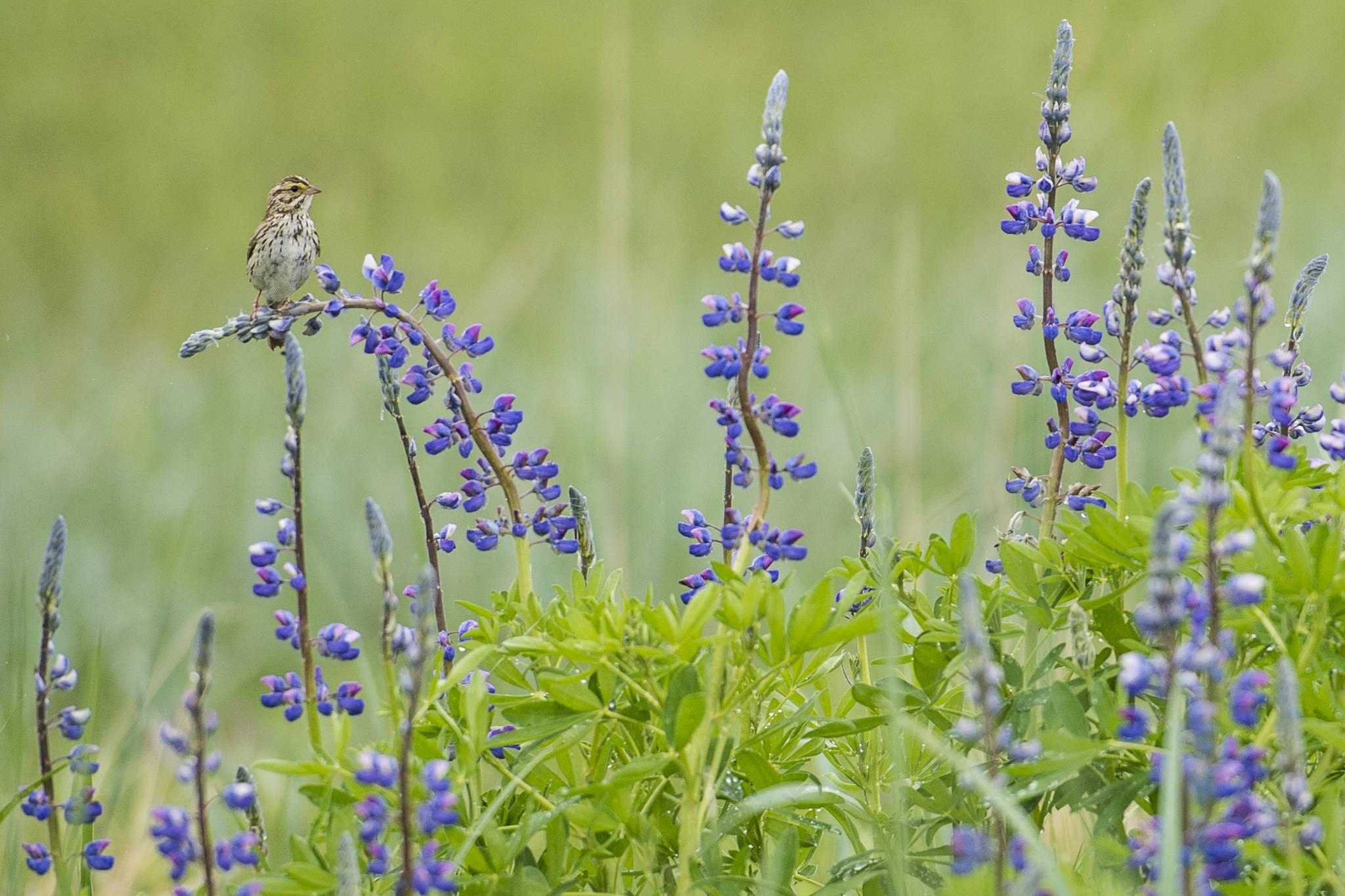On a day of filtered sunlight alternating with rain showers, Parks and Rec hikers headed up the Dan Moller trail. Many of the boards on this trail are rotten, broken, unstable or missing altogether, necessitating detours into the meadows, destroying vegetation. On the plus side, the flower show of bog rosemary made a pink, pointillist impressionistic picture, punctuated with the deeper pink of bog laurel and Jeffrey’s shooting star. Another plus was hearing the so-distinctive song (quick, three beers!) of the olive-sided flycatcher.
Other flower shows are on their way, too. Common shooting stars in Cowee Meadows made a bright pink blanket, soon to be overcome by the purple and blue of lupine and iris. Above the tram on Mount Roberts, cream-colored narcissus-flowered anemones dominated the subalpine zone but did not entirely obscure the little pink wedge-leaf primroses (“pixie-eyes”), yellow sibbaldias and avens and three kinds of violets.
Although some gardeners may complain about the rain, if it interferes with their planting activities, I was pleased indeed that the rains came. My home pond is almost full again and maybe some streams are recovering a little from their sorry, almost-dry condition. However, Dredge Creek and its ponds are still extremely low. Without a steady supply of snow-melt from the mountains (where there was little snow this year), the salmon streams depend on rain to fill their channels and make fish passage possible. And without salmon, the bears will be very hungry and no doubt cranky.
[Spruce up a classic: Locally foraged spruce tips make great rice krispie topper]
A few days ago, a friend and I were working in the Dredge Lake area, checking the protective cages that guard a few of the trailside cottonwoods from beaver chewing. We were enjoying the songs of northern water thrushes and warbling vireos as we walked along the old dike near Moose Lake, when we heard a sharp Snap! — a branch breaking. Then another Snap! Hmmm — somebody’s out there … but it wasn’t the thrashing of branches that an annoyed bear can make. Then a third Snap! OK, let’s go look. Peering up into the canopy, we spotted a large black lump wedged against the trunk, very high in a big cottonwood tree. Snap! And down came a branch. Aha! The bear is harvesting cottonwood seed pods. Some years ago, we often observed such behavior near the visitor center: bears way up in the trees, eating first the catkins on the male trees and then the pods from the female trees. Some of the trees in that area still show signs of that activity — broken branch stubs not yet concealed by new growth. I was glad to see this bear in action that day; there have been fewer observations of such activity near the visitor center in recent years.
• Mary F. Willson is a retired professor of ecology. “On The Trails” is a weekly column that appears every Friday. Her essays can be found online at onthetrailsjuneau.wordpress.com.

